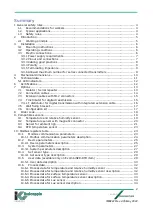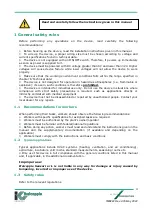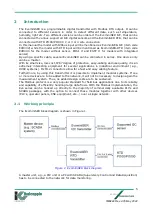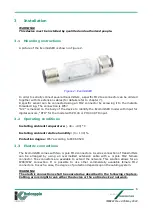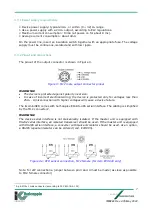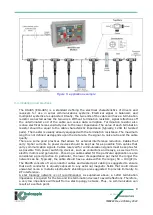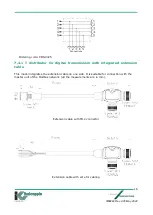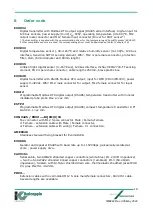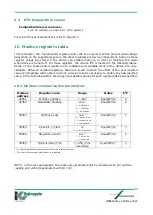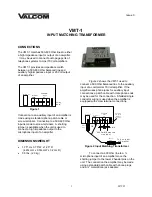
IMB222
Rev.4.05 May 2022
9
3.3.4 Polarity
According to RS485/422 standard, the signal connections are indicated with A and B.
However, it might be possible to find different indications on some products, such as HI/LO
or +/-. If a device is unable to connect to the network, try inverting A and B and to connect
the device again.
3.3.5 Terminating impedance
Signal reflections occur when a signal is transmitted along a transmission medium, such as
a copper cable. Some of the signal power may be reflected back to its origin rather than
being carried all the way along the cable to the far end. This happens because imperfections
in the cable cause impedance mismatches and non-linear changes in the cable
characteristics.
The signal reflections can be canceled by adapting the terminal impedance, whenever it is
necessary. If the time required for a single bit transmission is, at least, ten times the signal
propagation time on the network, the terminating impedance is not necessary.
The value of cable impedance depends on its dielectric material and mechanical dimensions.
The velocity of propagation in PE cable is about 2/3 the speed of signal if the dielectric cable
was vacuum. Therefore, the propagation time is:
𝑡
𝑝
=
1
0.66 ∗ 𝑐
0
∗ 𝑙
For example, for 9600baud and 1200m of cabling,
𝑡
𝑝
=6µs. The time required for a single bit
transmission is:
𝑡
𝑏𝑖𝑡
=
1
𝑏𝑎𝑢𝑑(
𝑏𝑖𝑡
𝑠
)
=
1
9600
= 104µ𝑠
Thus, in this example, the terminating impedance is not strictly necessary. However,
whenever the terminating impedance is required, a resistor must be inserted in the last node
(from the master) between terminal A and B (pin 2 and pin 4 in the M12 connector). Its
value must be equal to the cable impedance. In typical applications, the terminating
impedance has only resistive components and its typical values are in the range
120Ω
to
560Ω, depending on the cable and number of nodes on the network.
3.3.6 Allowed maximum number for series connected transmitters
The maximum number of transmitters that can be connected in series is dependent upon
the connection length and cable parameters.
A calculation worksheet that indicates to the user the maximum number of devices that can
be connected to an EvominiSER network given the cable cross-section (i.e., AWG) and cable
length is available. It is downloadable from the website
products.italcoppie.it
(EvominiSER
network data)
For example, with a 24
𝑉
𝐷𝐶
voltage supply and a 300m cabling:
-
AWG20: up to 60 devices
-
AWG22: up to 45 devices
-
AWG24: up to 35 devices
The given indications refer to the given power supply. The RS485 transceiver can support
up to 256 nodes, but it is suggested to place isolators/repeaters along the serial line. If the
power supply cabling is longer than 100 meters, it is strongly suggested to use a MLCC
capacitor (1000pF, 1kV; for example, RDE5C3A102J2M1H03A) connected between GND of
the power supply and GND of the plant: this one is connected the cable shield.


